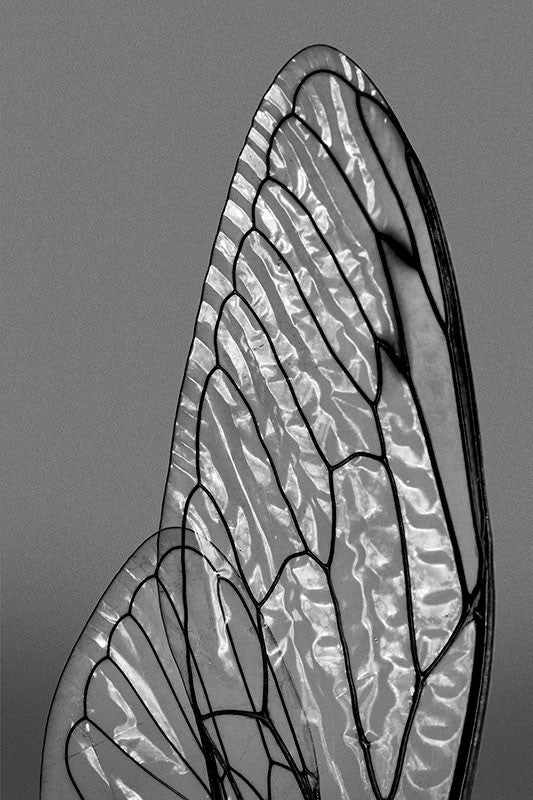
Have you ever considered the beautiful design of an ordinary cicada wing?
One of the wonders of nature is how its perfectly designed, functional structures also manage to be absolutely stunning in their beauty. Consider the shimmers of light catching the facets of these cicada wings.
A cicada spends most of its life underground in the nymph stage, eventually burrowing out to climb a tree, where it attaches to bark and begins shedding its nymphal exoskeleton. After emerging from the shell, its tightly folded wings unfurl like sails to become the firm, cellophane-like structures that will carry it for the rest of its life. While the sounds of cicadas have inspired much ancient myth and poetry (as we'll see below), their wings inspire modern science.
An inspiration to poets and scientists
Cicada wings are quite remarkable. They are super-water-repellant — so efficient at repelling water that they're actually self-cleaning with the slightest amount of moisture, even droplets of dew (1). In some species, their wings are also anti-bacterial. The nano-structure of the wings is so close in size to microbes, that microbes can shred themselves moving across the wing's surface (2). And, Chinese scientists are studying cicada wings to learn about their anti-reflective properties. This is a result of "nano-nipples," tiny structures that probably evolved to reduce the friction between the wing and air.
Shimmers of Light on Cicada Wings (A0020465), black and white photograph by Keith Dotson. Click to buy a fine print.
Cicadas are well-known for their cacophonous summertime singing from the treetops, where they live out their golden years dining on sap. In New York Magazine, Clint Rainey claims that cicada songs can reach the decibel level of a jackhammer (3). All the ruckus is made by males seeking mates. Writing about cicadas in the land of the rising sun, Rich Duffy says, "Japan's summer soundtrack is actually an insect love song – the cicada booty call." (4)
For the ancient Greeks, who apparently loved their cacophony, cicadas were the object of mythology and delight. In Phaedrus, Plato quotes Socrates as saying, “Feel the freshness of the air; how pretty and pleasant it is; how it echoes with the summery, sweet song of the cicadas’ chorus!” (5)
One of Aesop's Fables features a cicada outwitting a hungry fox. When the fox tries to beckon the cicada down from the treetop to pay him a compliment on his music, the cicada, having seen cicada wings in the mouth of another fox, recognizes it as a trick (6).
So, in considering the shimmers of light on the lovely wings of a cicada, there's much to admire, to ponder, and to study. You'll be in good company, including even the greatest of ancient Greek thinkers. From now on, listen with appreciation when you hear the summertime screech of cicadas from nearby woods.
Sources:
1. Nature, "Insect wings shred bacteria to pieces" by Trevor Quirk
2. Inside Science, "Cicada Wings Are Self-Cleaning" by Charles Q. Choi
3. New York Magazine, "Cicada Preparedness" by Clint Rainey
4. Tofugu "The Cicada's Song: Japan’s Summer Soundtrack" by Rich Duffy
5. Atlas Obscura, ‘O, Shrill-Voiced Insect’: The Cicada Poems of Ancient Greece by Natalie Zarrelli
6. The New Yorker "Songs of the Cicada" by Casey N. Cep


Leave a comment